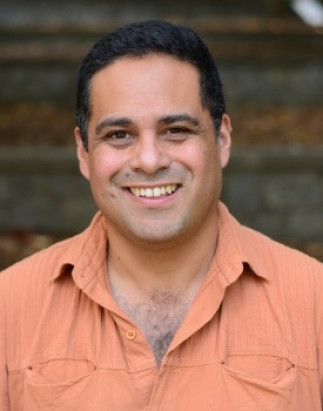Exciton polarons in two-dimensional hybrid metal-halide perovskites
Carlos Silva
School of Chemistry and Biochemistry
School of Physics
Georgia Institute of Technology
Présentation en anglais
Vidéoconférence, Zomm #: 892019835 (Zoom link)
Lorsque demandé, indiquer 'zéro zéro deux quatre sept deux' en chiffre.
Abstract: While polarons --- charges bound to a lattice deformation induced by electron-phonon coupling --- are primary photoexcitations at room temperature in bulk metal-halide hybrid organic-inorganic perovskites (HOIP), excitons --- Coulomb-bound electron-hole pairs --- are the stable quasi-particles in their two-dimensional (2D) analogues. Here we address the fundamental question: are polaronic effects consequential for excitons in 2D-HIOPs? Based on our recent work, we argue that polaronic effects are manifested intrinsically in the exciton spectral structure, which is comprised of multiple non-degenerate resonances with constant inter-peak energy spacing. We highlight measurements of population and dephasing dynamics that point to the apparently deterministic role of polaronic effects in excitonic properties. We contend that an interplay of long-range and short-range exciton-lattice couplings give rise to exciton polarons, a character that fundamentally establishes their effective mass and radius, and consequently, their quantum dynamics. Given this complexity, a fundamentally far-reaching issue is how Coulomb-mediated many-body interactions---elastic scattering such as excitation-induced dephasing, inelastic exciton bimolecular scattering, and multi-exciton binding---depend upon the specific exciton-lattice coupling within the structured excitation lineshape. We measure the intrinsic and density-dependent exciton dephasing rates of the multiple excitons and their dependence on temperature by means of two-dimensional coherent excitation spectroscopy. We find that diverse excitons display distinct intrinsic dephasing rates mediated by phonon scattering involving different effective phonons, and contrasting rates of exciton-exciton elastic scattering. These findings establish specifically the consequence of distinct lattice dressing on exciton many-body quantum dynamics, which critically define fundamental optical properties that underpin photonics and quantum optoelectronics.
For more information about Prof. Silva, you can consult his research web page.
Cette conférence est présentée par le RQMP.

